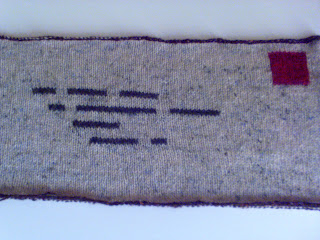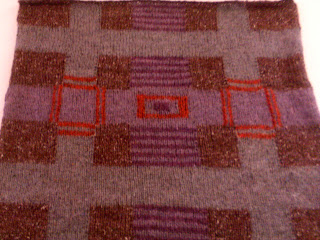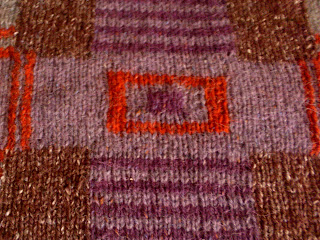I am on a roll at the
moment. I think I was inspired by
Armistice Day to put more effort into this project.
This piece is called George and I
hope it is obvious what the occupation is – it is a letter to represent a
postman.
This piece was named after George
Skeer who was the husband of my 4th cousin twice removed. George was a postman but he became a sergeant
in the Royal Garrison Artillery and died on 21 March 1918 aged 37. This piece is also for my 2nd
cousin, three times removed - Francis Reginald Wade who was a rifleman in the 8th
battalion of the London Regiment (the Post Office Rifles). He died on 24 July 1915 aged 24.
When I was thinking about what to knit for a postman – I did consider a pillar box, but I like the simplicity of a letter. It is a bit of an odd shape – but at least it is not tall and narrow. I chose the most “letter-like” shape for the postmen. It is the second time this year that I have knitted words as blocks of colour – or in this case – blocks of grey. I may embroider on some franking across the stamp.
This piece is 95sts wide and 66
rows high. I mainly used Rowan Felted
Tweed Shade: 177.
I am now working on a piece for a
tailor and draper.












